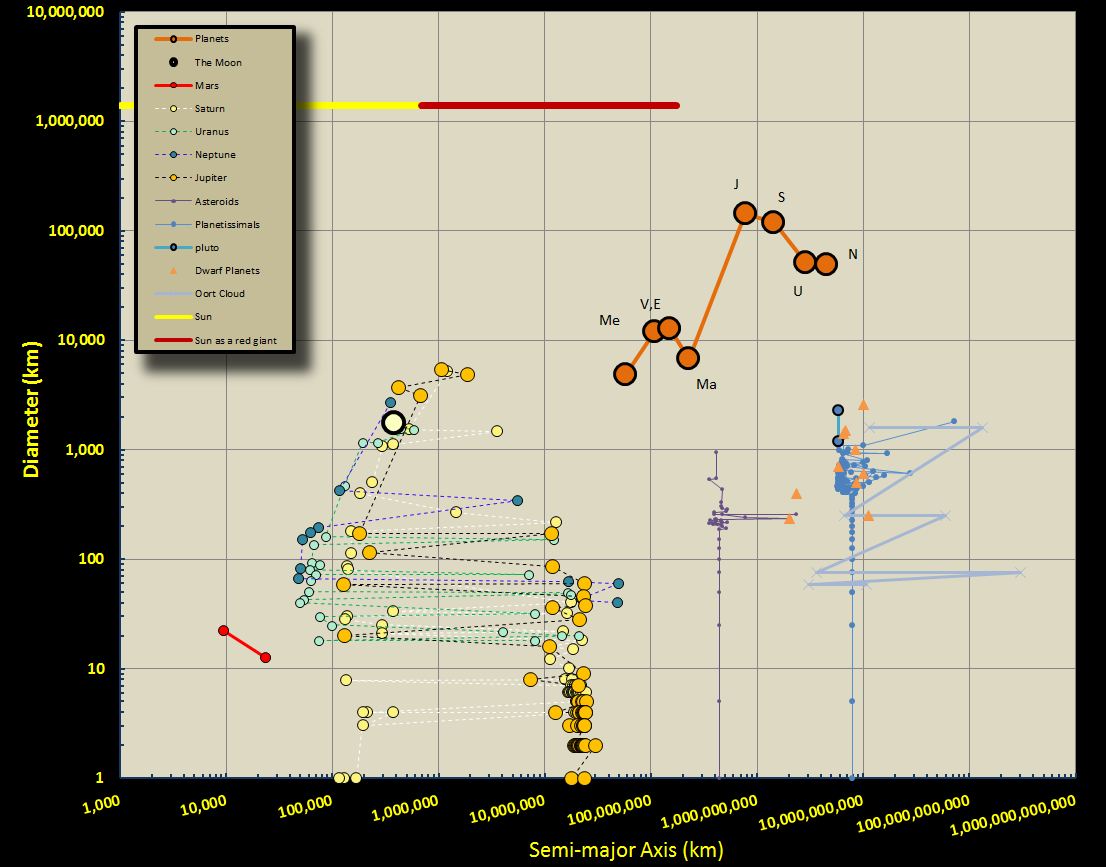Some observations from this are:
- Mars has just two very small moons orbiting and very very low altitude
- Earth's Moon is very large given the size of the Earth and its position in the inner solar system
- From Jupiter to Neptune there is a logarithmic decay in planet size with orbital radius implying some degree of gravitational sorting of material in the early evolution of the solar nebula
- The moons of J, S, U and N follow a strikingly similar patterning on this graph with Jupiter having the most abundant spread due to it being well surveyed and containing many objects >1 km in diameter.
- These gas giants have moons that split into an inner ring of increasing size and outer ring of decreasing size, hence all the big moons are located at roughly 1M km radius.
- Three of these moons are larger than the smallest planet, Mercury. And many of these moons are larger than the largest planetesimals and dwarf planets in the outer reaches of the solar system.
- Pluto and Charon are clearly part of the dwarf planet/planetesimal cluster, hence their degradation from the planet category a decade ago.
- Scatter in the data beyond the orbit of Saturn indicates more observations are required.
- The Dwarf planets and asteroid belt show signs of interaction
- Oort Cloud and outer planetesimals show signs of interaction
- Due to its enormous surface area, the Oort Cloud probably represents a huge mass of material which is under-represented on this graph, especially considering objects <1 km in diameter.

No comments:
Post a Comment